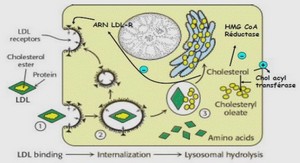Volatile Components from Cymbopogon giganteus
Introduction
The Cymbopogon genus (Poaceae family) comprises 56 species 1 among which four species, Cymbopogon citratus, C. flexuosus, C. martini and C. giganteus grow wild in Madagascar. More precisely, the Malagasy plant growing in arid south-western Madagascar is Cymbopogon giganteus (Hochst) Chiov var. madagascariensis (A. Camus). This variety differs from the African C. giganteus by its lower height (0.5 – 1.5 m instead of 2 – 3 m). Leaves are glaucous green, linear and flexible, with little rounded or no rounded at the base. Conversely, in African species, leaves are flat and their edges are rough to the touch. Finally, the inflorescences are smaller in diameter (10 – 30 cm instead of 30 – 40 cm) 2,3. Aerial parts of the African C. giganteus produce an essential oil whose composition ISSN 0972-060X *Corresponding author (Felix Tomi) E- mail: < felix.tomi@univ.corse.fr > Jeobp 13 (5) 2010 pp 522 – 527 522 Received 01 February 2010; accepted in revised form 26 June 2010 has been extensively investigated. The major componenents of C. giganteus oils from Benin 4 , Burkina Faso 5 , Mali 6 , Côte d’Ivoire 7 and Cameroon 8 are p-menthane derivatives such as cis- and trans-p-mentha-2,8-dien-1-ol, cis- and trans-p-mentha-1(7),8-dien-2-ol, cis- and trans-isopiperitenol, limonene and carvone. The aim of the present work was to characterise the essential oil of C. giganteus var. madagascariensis from Madagascar and to compare its composition with that of C. giganteus oil from continental Africa.
Experimental Plant material
Aerial parts (leaves, stems) of Cymbopogon giganteus var. madagascariensis were collected in Befoly, Toliara, in the South-West region of Madagascar, in March – July 2009. A voucher specimen was deposited at the herbarium of the Department of Botany, Institut Malgache de Recherches Appliquées (IMRA). Distillation of volatile components: Aerial parts of C. giganteus var. madagascariensis were subjected to hydrodistillation in our laboratories for 3 h using a Clevengertype apparatus (Samples L1-L4) or by steam distillation for 3h in industrial equipment (Inox Alembic of 2000 L, samples I1-I4). The essential oils were dried over anhydrous sodium sulphate and kept at 4°C prior analysis. Analytical GC: The GC analysis was carried out with a Clarus 500 Perkin- Elmer Autosystem apparatus equipped with two flame ionisation detectors (FID) and fused capillary columns (50 m x 0.22 mm i.d., film thickness 0.25 μm), BP-1 (polymethylsiloxane) and BP-20 (polyethylene glycol). Carrier gas: helium; linear velocity: 0.8 mL.min-1. The oven temperature was programmed from 60°C to 220°C at 2°C.min-1 and then held isothermal (20 min). Injector temperature was 250°C (injection mode: split 1/60). Detector temperature: 250°C. The relative proportions of the essential oil constituents were expressed as percentages obtained by peak area normalization, all relative response factors being taken as one. GC-MS analysis: The essential oil (sample I1) was analysed with a Perkin-Elmer TurboMass detector (quadrupole), directly coupled to a Perkin-Elmer Autosystem XL, equipped with a fused-silica capillary column (60 m x 0.22 i.d., film thickness 0.25 μm), Rtx1 (polydimethylsiloxane). Carrier gas: helium at 1 mL/min; split, 1/80: injection volume, 0.2 μL; injection temperature, 250°C; oven temperature programmed from 60°C to 230°C at 2°C/min and then held isothermal (45 min); Ion source temperature, 150°C; ionisation energy, 70 eV; electron ionisation mass spectra were acquired over the mass range 35-350 Da. Carbon-13 NMR analysis: NMR spectra were recorded on a Bruker AVANCE 400 Fourier Transform spectrometer operating at 100.13 MHz for 13C, equipped with a 5 mm probe, in deuterated chloroform (CDCl3 ), with all shifts referred to internal tetramethylsilane (TMS). 13C NMR spectra were recorded with the following parameters.



